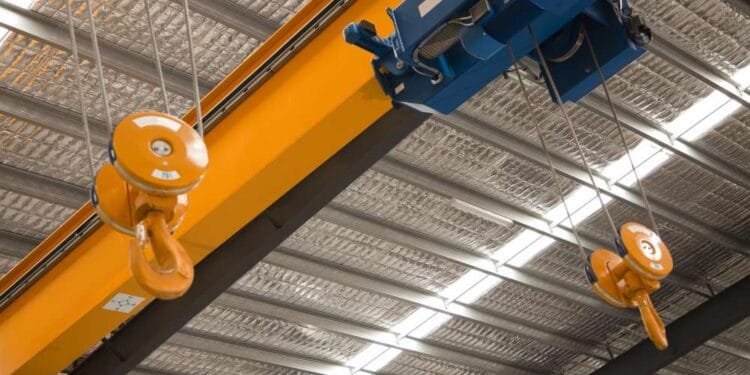Purchasing any kind of equipment for your business is a big decision, and cranes are a particularly significant investment. Experts anticipate that the global crane market will grow by $9 billion by 2024, so you’re not alone in looking to purchase an overhead bridge crane.
But how do you choose the right bridge crane for your company’s needs? Read our list of tips to help you made the right decision.
1. What Load Capacity Do You Need?
The type of bridge crane that you choose will ultimately depend on the lifting capacity you require. Single girder bridge cranes can usually support anything up to 20 tons, with a span of 60 feet. Anything heavier than 20 tons will require a double or box girder design.
A load capacity that is too low presents clear risks. If the load is too heavy for the equipment, this could cause machinery failure or injury to operatives. Likewise, if the capacity is too high then this could cause a reduction in efficiency and slow down your operation. This will result in wasting time and money.
Hence, it’s important to use the right capacity to ensure that your crane is utilized efficiently. Also, you need to bear in mind that liquid loads behave differently from solid objects. This fact should be borne in mind when considering a bridge crane for sale.
2. What Crane Span Do You Need?
In determining what crane span you need, you should factor in whether the crane will be used at a specific workstation, or whether it needs to span the whole facility. A free-standing bridge crane will generally work over a specific workstation, whereas a bridge crane can be fixed to the ceiling to cover a larger space.
3. Moving Distance of the Overhead Bridge Crane
Bridge cranes, like all overhead cranes, operate by moving loads across a specified distance. The type of overhead crane that you require will depend on the distance that you need to transport the loads in question.
If you need to move loads over a relatively large distance, or along a path that will always be fixed, then it’s worth considering a crane with some form of rails or track. This can be a very efficient approach.
A bridge crane with a monorail can carry large loads across long distances, with little resistance. This can also reduce the amount of space needed to accommodate the structure.
4. Lift Height
A final and very important consideration is the lift height of your overhead bridge crane. This is a fundamental consideration when choosing your overhead bridge crane.
It might not seem obvious, but you also need to factor in the size of the hoist and trolley equipment when working out the lift height that is needed. If you don’t take this into account, you could end up with equipment that does not fit into the space available or is not able to operate efficiently.
Choosing Your Overhead Bridge Crane
Choosing the right overhead bridge crane for your operation is a big decision. If you need help in selecting the right machinery, then there are bridge crane specialists who can help you.
For all the latest in business and technology news, don’t hesitate to check out the rest of the blog to ensure that you’re fully informed.








